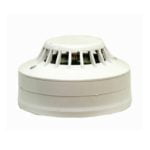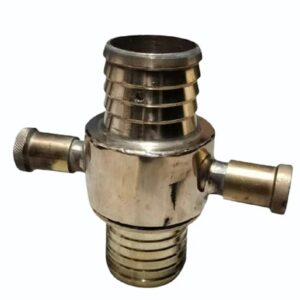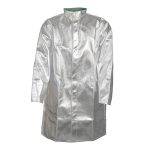Your list is empty, add products to the list to send a request
What are the 4 types of fire extinguishers used for?

17
Feb
A fire can grow dangerously fast – spreading flames and emitting thick, toxic smoke within 2-3 minutes. Having the right fire extinguisher on hand can help suppress small fires before they rage out of control. But with four different types of extinguishers available, each suited for specific materials, how do you select the right one?
This guide examines popular fire extinguisher types and their applications so you can make an informed choice. Read on to learn how each works to protect against different fire loads.
Water Fire Extinguishers
Simple water extinguishers are the most common type of them all. They are mainly used to put out Class A types of fires. The ones that we are talking about are the fires that involve common burnables like wood, paper, clothes, and some plastics. The water extinguisher works by producing cold to cool the combustible materials to below their ignition point thus suffocating the fire.
Such an extinguisher is not only effective but also the most convenient one as it is easy to use, which is why it is a necessity in many locations. Still, its usage is limited to certain fire types thus the requirement for choosing the appropriate extinguisher for the fire class.
Keynotes:
- Cools burning material while blocking the oxygen supply
- Avoid using on grease or electrical fires
- Higher volume ratings handle bigger fires
- Rechargeable and recyclable
Ideal for: House, offices, and schools.
Not suitable for: Liquid grease fires electrical fires or liquid fuel fires.
Carbon Dioxide (CO2) Fire Extinguishers
CO2 fire extinguishers are targeted to extinguish Class B and electrical fires. They work through the mechanism of displacing oxygen from the surrounding air, thereby killing the fire, and by lowering the fuel’s temperature. These fire extinguishers are most suitable for the kinds of fires involving flammable liquids like gasoline, paint and solvents, and also for the fires involving electrical equipment.
CO2 extinguishers are an effective option where water or chemical residue must not be left behind as a result of the extinguishing process.
Key attributes:
- Works by cooling and oxygen deprivation
- Safe on live electrical equipment
- No cleanup required after discharge
- Can avoid collateral damage
Ideal for: Industrial premises, mechanical rooms, and areas with potential for shock hazards.
Not suitable for: The cooling of the material in Class A is inadequate and as a result, the equipment just fires.
Dry Chemical Fire Extinguishers
Dry chemical extinguishers are multi-purpose and, thus, widely used against Class A, B, and C fires, and therefore, are common in many settings. They spread fine dust that halts the chemical process of the fire. These extinguishers are very useful for fighting mixed fires where the fire class may be indeterminate.
A dry chemical extinguisher’s versatility in the ability to put out different kinds of fires makes them vital in all kinds of settings, from homes to commercial kitchens and industrial facilities.
Benefits include:
- Multi-purpose for regular fuel types
- Low cost per use
- Higher ratings tackle sizable threats
- Powder clogs burning materials
Ideal for: Kitchens, garages, and vehicles are three categories.
Not suitable for: Reacting metal or cooking media (oils and fats) fire.
Wet Chemical Fire Extinguishers
Wet chemical extinguishers are used in Class K fires. They are a type of fire where the materials involve cooking oils and fats. The effectiveness of these products against Class A fires is also significant. The extinguishing agent works on the basis of the formation of a soapy solution that is cooled and smothers the fire, preventing re-ignition.
These extinguishers are the life-saving equipment for the setting where a fire hazard caused by the high-temperature cooking media is an issue.
Notable traits:
- Special potassium formulas for commercial kitchens
- Prevents re-flash of burning cooking media
- Safe for food areas with no toxic residue
- Corrosion-resistant stainless steel cylinder
Ideal for: Restaurant kitchens and commercial food sphere.
Not suitable for: Gasoline, gas, electricity.
Making Fire Safety a Priority with FireSupplies
FireSupplies knows how crucial it is to have the correct fire extinguisher in time of different emergencies. Whether it is a commercial kitchen, an office space, or your home, selecting the right type of fire extinguisher is an important part of your fire safety plan. Understanding the specific applications for water, CO2, dry chemical, and wet chemical fire extinguishers allows you to be prepared to react appropriately to different types of fire.

Enjoy
Special Off



























